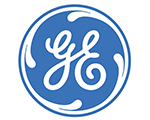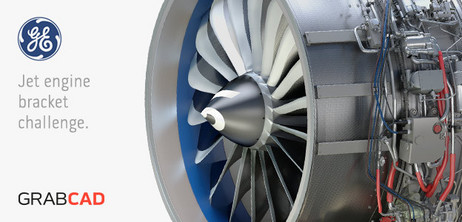Reducing Flight Fuel Costs with Open Innovation
Published Mar-14-14Breakthrough:
An open innovation contest leads to the design of jet engine brackets that can help to reduce fuel costs.
Company:
General Electric (GE), United States
The Story:
 Idea contests are a popular form of open innovation that capture the imagination of brilliant minds and focus the attention on speeding up innovation outcomes.
Idea contests are a popular form of open innovation that capture the imagination of brilliant minds and focus the attention on speeding up innovation outcomes.General Electric (GE) is a prominent open innovation cheerleader and one of its OI tools is competitions. In 2013 it hosted the '3D Printing Design Quest', tasking participants to come up with redesigns for loading brackets on jet engines using 3D printing.
During handling, the brackets support the weight of the engine without breaking or warping. They must be robust enough to withstand a lot of vibrations during flights.
The contest’s key objectives were for an improvement in bracket strength and performance, and a bracket design modification that would reduce bracket weight to help reduce fuel costs.
Additive manufacturing (3D printing) has caught the attention of many in the aerospace industry for its ability to optimize weight and performance of load bearing structures previously made by conventional manufacturing technologies.
Innovations can Come from Anywhere
There was great interest in the open innovation contest with nearly 700 entries coming in from across 56 countries. The submissions were whittled down to just ten bracket designs and these were made at GE’s additive manufacturing facility in Cincinnati. They were also subjected to load testing and tested to failure. The outcome of all this activity was the selection of eight winners.
GE Executive Director of Global Innovation Steve Liguori is a big fan of using external knowledge sources. He said: “By applying GE’s scale and expertise to open innovation, we can continue to grow the ecosystem of designers, engineers, materials scientists, and other partners to redefine the industry and drive real results for our customers.”
The eight winners were awarded $20,000 between them. First prize and $7,000 was awarded to Indonesia-based M. Arie Kurniawan. The other winners shared the remaining $13,000.
GE says that additive manufacturing is playing a more important part in its manufacturing processes. Putting it to work on an industrial scale has already reduced production times by up to 25%, and achieved cost savings without sacrificing performance. The company is continuing to look at how the flexibility of additive manufacturing can deliver significant advantages over traditional manufacturing methods.
Benefits of Innovation Contests
Open innovation competitions such as the '3D Printing Design Quest' are critical drivers of innovation. Among the benefits are:
• They can lead to more diverse research and development as participants take
multiple routes to create their innovations
• They provide a platform for innovators
• They can lead to faster and better innovations at a lower cost than traditional
R & D processes
Next Story »

